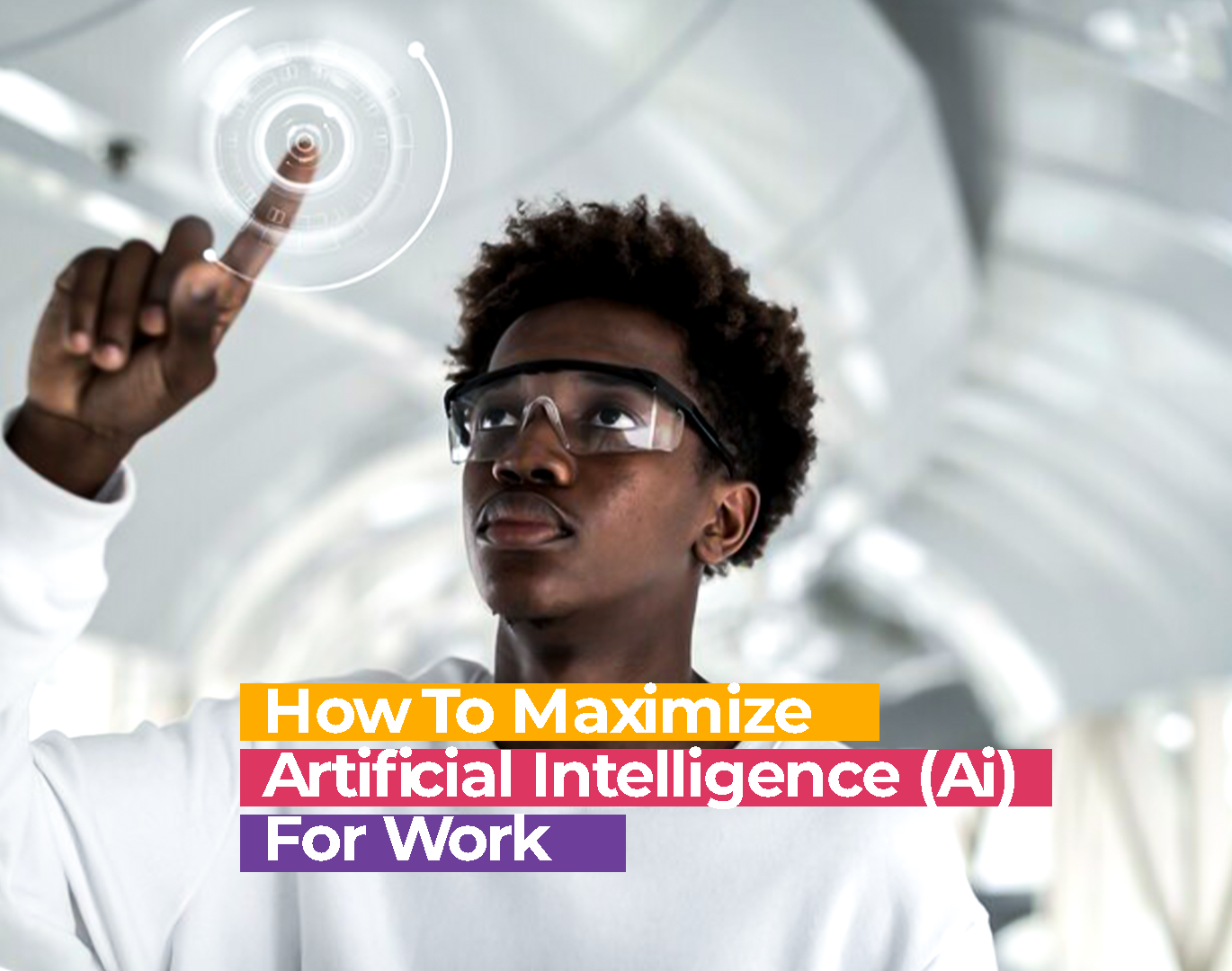Artificial Intelligence (AI) is a tool carved from technological innovation in an attempt to enable quicker and more accurate human cognitive activities, but this time by machines, not humans. “Artificial Intelligence” is the replication of human intellectual functions by machines, particularly computer systems. This article aims to discuss how to maximize AI for work to Its full potential.
We’ll discuss:
- How artificial intelligence work
- How to maximize artificial intelligence for work
- Jobs you can get with artificial intelligence

How Artificial Intelligence Works
Artificial intelligence (AI) systems are designed to perform tasks that typically require human intelligence, such as visual perception, speech recognition, decision-making, and language translation. There are many different approaches to building AI systems, but most fall into one of two categories: rule-based systems and machine learning systems.
Rule-based Systems:
Rule-based systems are designed to perform a specific task by following a set of predefined rules. For example, a rule-based system for recognizing spoken words might break speech down into individual sounds, and then match those sounds to words in a predefined dictionary.
Machine Learning Systems:
Machine learning systems are designed to learn from data. They are not explicitly programmed to perform a specific task, but instead, learn to perform the task on their own by analyzing examples of the task. There are many different types of machine learning, including supervised learning, unsupervised learning, and reinforcement learning.
-
Supervised learning
is where a model is trained on a labeled dataset, which means the input and output are provided, and the model learns to map inputs to outputs.
-
Unsupervised learning
is where a model is trained on an unlabeled dataset, which means only inputs are provided, and the model has to find patterns and structure by itself.
-
Reinforcement learning
is where the model learns from the feedback of the environment, rewards, and penalties.
-
Deep learning
is a subset of machine learning that uses neural networks, which are modeled after the human brain, to analyze and interpret data.
How to maximize AI for work
To maximize the use of Artificial Intelligence (AI) in the workplace, it is important to:
Identify the specific tasks or processes that can be improved or automated with AI.
This is actualized through data analytics, machine learning, predictive modeling, natural language processing, computer vision (like; object detection and recognition, facial recognition, and image classification), human experts, process mining, and process simulation.
Gather and clean the necessary data to train and test AI models.
Artificial intelligence gathers and cleanses data via data scraping, data integration, data collection, data annotation, data preprocessing, data cleaning, data augmentation, data filtering, and data validation.
Select and implement appropriate AI algorithms and tools for the task at hand.
This is done by defining the problem, Assessing the data, reviewing the literature (to understand the state-of-the-art algorithms, methods, and tools for solving the problem), algorithm selection, experimentation and testing, hyperparameter tuning, model evaluation, model deployment, continual learning, explainability, and interpretability.
Jobs you can get with Artificial Intelligence
There are a variety of jobs that involve working with artificial intelligence, including:
Data Scientist:
Data scientists are responsible for collecting, analyzing, and interpreting large sets of data to inform the development of AI systems.
Machine Learning Engineer:
Machine learning engineers design and develop algorithms and models that enable machines to learn from data.
AI Researcher:
AI researchers research to advance the field of AI in areas such as natural language processing, computer vision, and machine learning.
AI Product Manager:
AI product managers are responsible for identifying opportunities for AI-based products and services and managing their development and deployment.
AI Consultant:
AI consultants advise businesses on how to integrate AI into their operations and processes.
Robotics Engineer:
Robotics engineers design, develop and test robots and robotic systems.
Natural Language Processing Engineer:
Natural Language Processing engineers develop and improve language-based AI systems such as chatbots and voice assistants.
Computer Vision Engineer:
Computer vision engineers are responsible for developing and improving computer vision-based AI systems.
Deep Learning Engineer:
Deep learning engineers are responsible for developing and implementing deep learning models and algorithms.
AI Ethics Consultant:
AI ethics consultants are responsible for ensuring that AI systems are developed and deployed ethically and responsibly.
Conclusion
AI is an effective way to maximize productivity in work situations and this productivity comes by following certain rules and procedures as it relates to artificial intelligence.
Align yourself with these procedures and processes and you will see the effectiveness of AI in your work.


